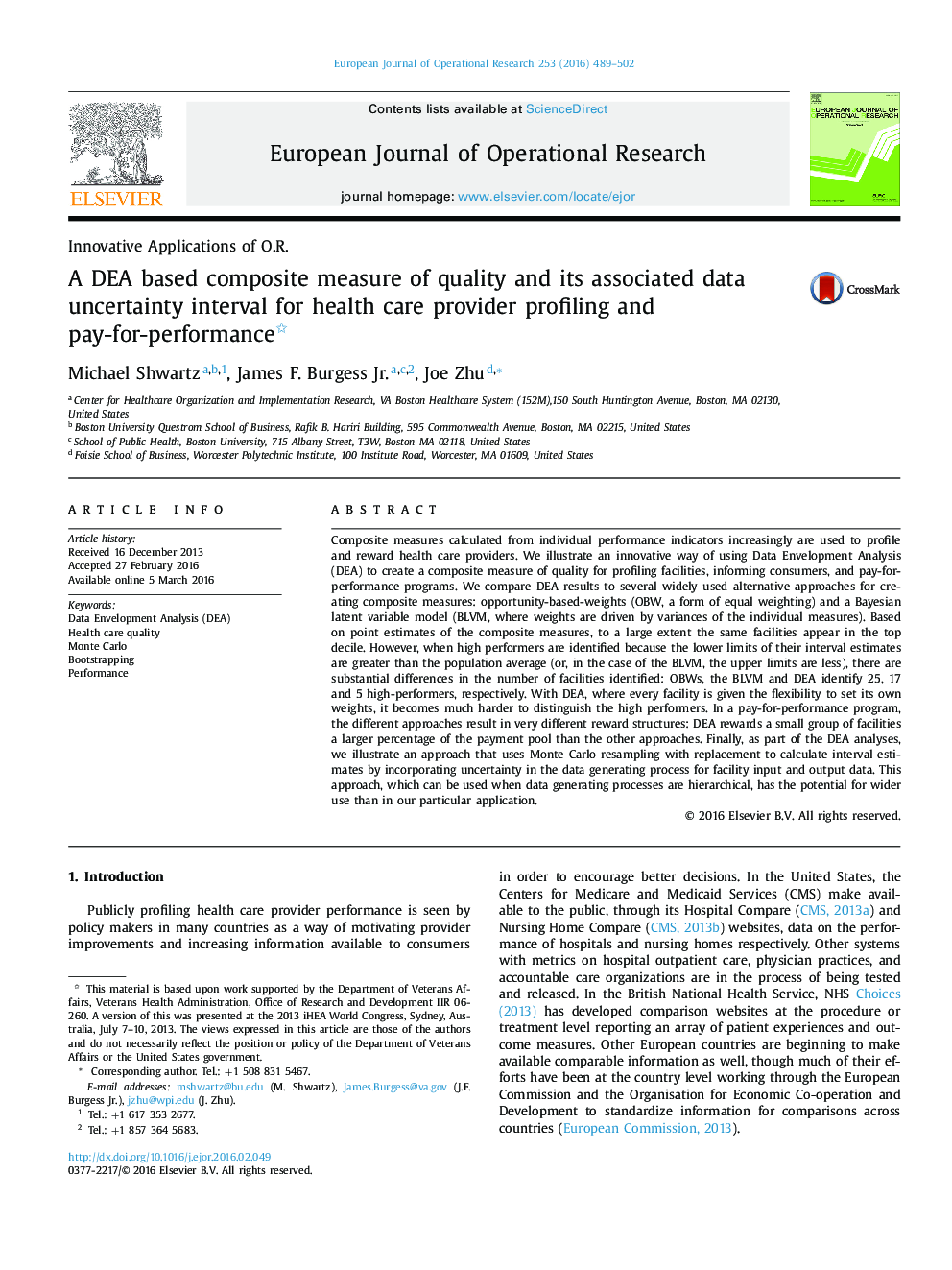| Article ID | Journal | Published Year | Pages | File Type |
|---|---|---|---|---|
| 479259 | European Journal of Operational Research | 2016 | 14 Pages |
•DEA is used to develop a composite measure of health care quality.•An empirical study is carried in US Department of Veterans Affairs nursing homes.•DEA identifies fewer high performers but more highly rewards the high performers.•Advantages of DEA for developing composite measure make it worth pursuing further.•Monte Carlo resampling with replacement is applied to reflect DEA data uncertainty.
Composite measures calculated from individual performance indicators increasingly are used to profile and reward health care providers. We illustrate an innovative way of using Data Envelopment Analysis (DEA) to create a composite measure of quality for profiling facilities, informing consumers, and pay-for-performance programs. We compare DEA results to several widely used alternative approaches for creating composite measures: opportunity-based-weights (OBW, a form of equal weighting) and a Bayesian latent variable model (BLVM, where weights are driven by variances of the individual measures). Based on point estimates of the composite measures, to a large extent the same facilities appear in the top decile. However, when high performers are identified because the lower limits of their interval estimates are greater than the population average (or, in the case of the BLVM, the upper limits are less), there are substantial differences in the number of facilities identified: OBWs, the BLVM and DEA identify 25, 17 and 5 high-performers, respectively. With DEA, where every facility is given the flexibility to set its own weights, it becomes much harder to distinguish the high performers. In a pay-for-performance program, the different approaches result in very different reward structures: DEA rewards a small group of facilities a larger percentage of the payment pool than the other approaches. Finally, as part of the DEA analyses, we illustrate an approach that uses Monte Carlo resampling with replacement to calculate interval estimates by incorporating uncertainty in the data generating process for facility input and output data. This approach, which can be used when data generating processes are hierarchical, has the potential for wider use than in our particular application.
